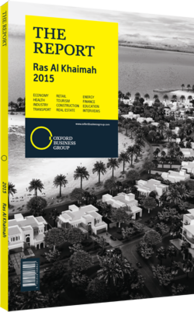Ras Al Khaimah rewrites regulations, prioritising balance sheet health for banks and insurers
Regulatory changes in the UAE’s banking and insurance industries have picked up in recent years. In the banking sector, new regulations in line with Basel III standards are set to stabilise and protect banks, setting new capital and liquidity standards, while changes to the insurance sector are to limit investment losses in the UAE’s equities markets.
Insurance
In February 2015 the Insurance Authority issued a series of new regulations for Islamic and conventional insurers operating in the UAE, including limits on what kinds of investments firms can make in capital markets. These regulate the financial, technical, investment and accounting operations of both traditional and takaful (Islamic insurance) providers, in order to reduce investment income losses suffered in recent years.
The new rules were unveiled against a backdrop of increasing volatility in local equity markets, which have been hit hard by falling oil prices that plunged by more than 50% between mid-2014 and January 2015. In turn, the Dubai Financial Market’s general index dropped by 25% between October 2014 and February 2015, while the Abu Dhabi Exchange benchmark index fell by 11% over the same period. Insurance companies have also been affected — Ras Al Khaimah’s United Insurance Company (UIC), for example, reported a 9.7% drop in assets in 2014, from Dh314.4m ($85.6m) to Dh283.9m ($77.3m).
To mitigate the sector’s market risk exposure, the new regulations limit insurance firms’ investments in different instruments and sectors. Under the new rules, insurers can invest a maximum of 30% of their total investment assets in real estate. The threshold for investment in equity instruments for listed and unlisted companies in the UAE is also set at 30%, with a limit of 10% for any single stock, fund or instrument. Meanwhile, investment in foreign equity instruments is capped at 20%, with exposure to a single counterparty established at 10% or less.
Importantly, insurance companies are permitted to invest up to 100% of their funds in government securities or instruments issued by the government of the UAE or one of the emirates. They are also required to deposit at least 5% of their assets with banks in the UAE. In addition, the new regulations allow insurers to invest up to 30% in loans secured by life policies issued by the company itself, and allocate as much as 1% to financial derivatives, up to 30% in secured loans and deposits with non-lenders, and another 10% in other invested assets.
According to Sultan Al Mansouri, UAE minister of economy and chairman of the IA, the new rules will ensure solvency of insurance firms and their ability to meet all liabilities, though their impact will not be known until year-end results for 2015 are released.
Banks
Banks are also adapting to new regulatory changes. The central bank moved to roll out a series of reforms aimed at Basel III compliance in September 2014, publishing its “Financial Stability Report 2013”, which proposed revisions to the existing regulatory framework. Requirements include a minimum capital adequacy ratio of 8% of risk-weighted assets, with Tier 1 capital and core Tier 1 capital to comprise 6% and 4.5%, respectively. New liquidity regulations emphasise the need for each bank to have a proper liquidity risk management framework to minimise stress on existing banks. These capital reforms are unlikely to have a significant impact on UAE banks.
In September 2014 law firm Al Tamimi & Co. noted that “many of the UAE local banks already have high level[s] of capital adequacy, [and] the Basel III changes may not substantially impact the requirements of capital profile of the local banks.” RAKBANK, for example, had a Tier 1 capital adequacy ratio of 26.5% at end-2014, down from 29% in 2013 but above the Basel III limit, allowing “ample room for growth”, according to its 2014 annual report.
You have reached the limit of premium articles you can view for free.
Choose from the options below to purchase print or digital editions of our Reports. You can also purchase a website subscription giving you unlimited access to all of our Reports online for 12 months.
If you have already purchased this Report or have a website subscription, please login to continue.

